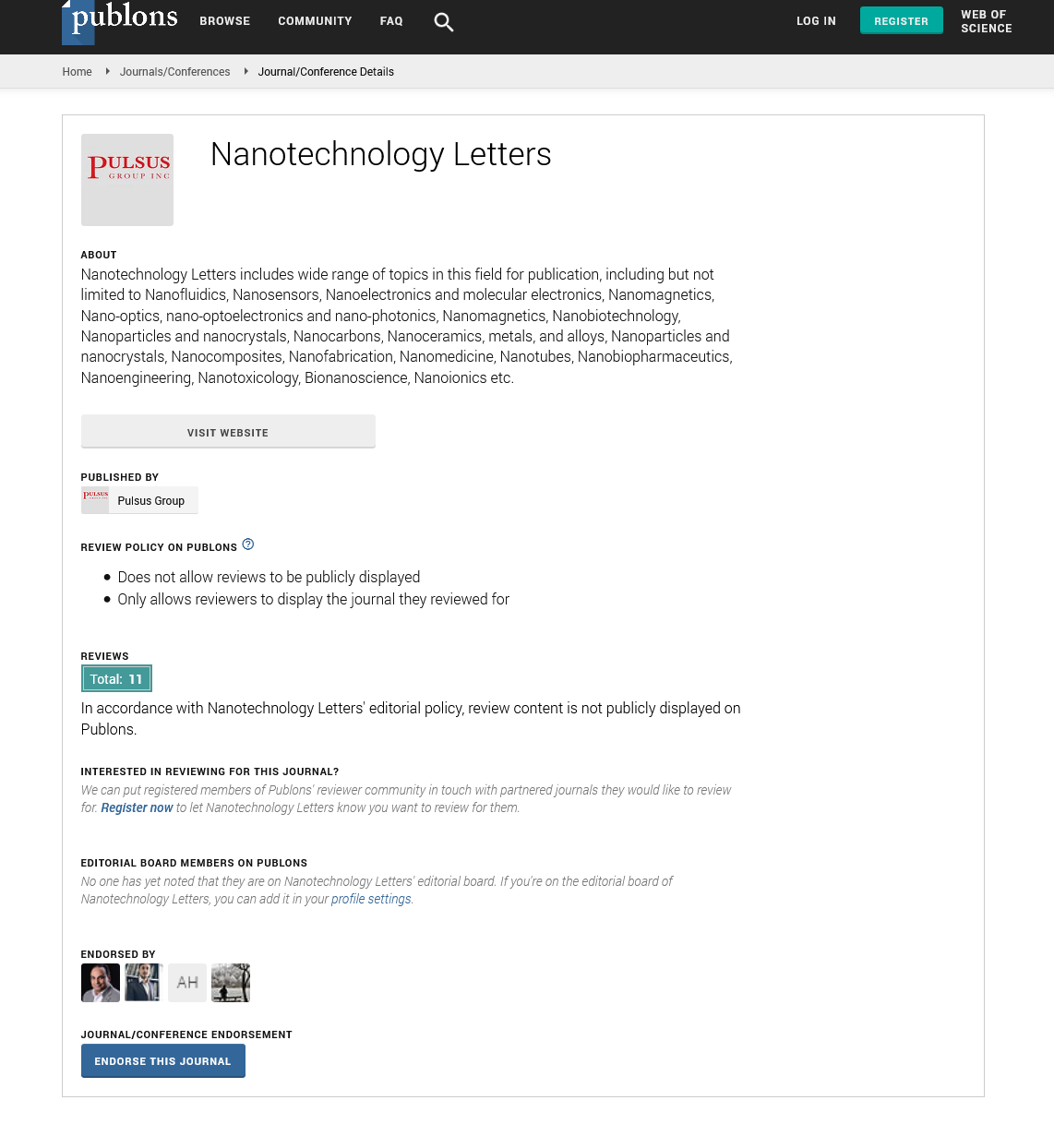The optical properties and the uses of nanoceramics
Received: 01-Nov-2021 Accepted Date: Nov 15, 2021; Published: 22-Nov-2021
Citation: Sugiyama Z. The optical properties and the uses of nanoceramics. Nanotechnol Lett 2021;6(2):4.
This open-access article is distributed under the terms of the Creative Commons Attribution Non-Commercial License (CC BY-NC) (http://creativecommons.org/licenses/by-nc/4.0/), which permits reuse, distribution and reproduction of the article, provided that the original work is properly cited and the reuse is restricted to noncommercial purposes. For commercial reuse, contact reprints@pulsus.com
Description
Nanoceramics are a type of nanoparticle first discovered in the early 1980s composed of ceramics. Industrial or high-performance ceramics are made from high-purity, carefully selected materials such as silicon carbide and aluminum oxide, far from the traditional clay tile pots and dishes that come to mind when it comes to "ceramics." The term nanoceramic refers to materials made from ultrafine particles less than 100 nm in diameter and is classified as non-metallic solids, inorganics and heat resistant. The most important ceramic materials are systems made from carbides, metal oxides, borides and nitrides, which are small in size and rarely defective. Nanoceramics were initially manufactured using the sol-gel method. This sol-gel process is a form of chemical solution deposition that mixes nanoparticles and gel in solution to form nanoceramics. Nanoceramics have unique chemical, physical, mechanical and magnetic properties that make them different from other materials such as plastics, metals and traditional ceramic bulk materials. These unique and often improved properties of ferromagnetism, dielectric, ferroelectric, pyro electricity, piezoelectric, reluctance, and superconductivity are the types and quantities of materials that make up nanoceramics, and the size of the raw materials. Nanoceramics also have excellent machining, mechanical and surface properties such as ultrastrength and toughness, plasticity, machinability and bioactivity, all of which depend on the size of the particles used to construct them.
Nanoceramic properties
The bulk behavior of a material can change dramatically, for example, if it is made from nanoscale building blocks that affect the properties of the final product. Nanoceramics are extremely strong and have high compressive and bending strength. Their strength is similar to that of steel, and most ceramics retain their strength at high temperatures. However, their brittleness is the biggest technical obstacle to their practical application, especially in load-bearing applications. The physical and mechanical strength of nanoceramics depends on the size of the particles used to make them, as traditional brittle materials can increase ductility by reducing the size of the particles used. Ceramics made from nanoparticles can be superplastically deformed at moderate temperatures before being heat treated at high temperatures for high temperature solidification. Nanoceramics are relatively inert, and when they become reactive, they develop desaturation and defects. Some iron-based or nickel, barium, and chrome ceramics have metallic properties and are highly resistant to demagnetization.
Nanoceramic applications
One of the main applications of nanoceramics is biomedical and medical technology, especially bone shaping. Bioactive nanoceramics are similar to bone packages and can function as nano-altars that support bone regeneration. It has also been suggested that nanoceramics can be found in transportation systems, fuels and warehousing, transportation, aerospace, and construction applications. They also use electronic equipment as semiconductors, insulators, operators and attractions. Nanoceramics can also be used in armor to replace the hard, tough layers of shock-absorbing fibers. Hard body armor, including ceramic inserts and swords or titanium plates, is under development and has weak protection against blunt trauma and may provide high security in a hurry. The insert absorbs kinetic energy from the shot and can dissipate it with local fragmentation of the ceramic insert.






